Easy Pose - Sukhasana
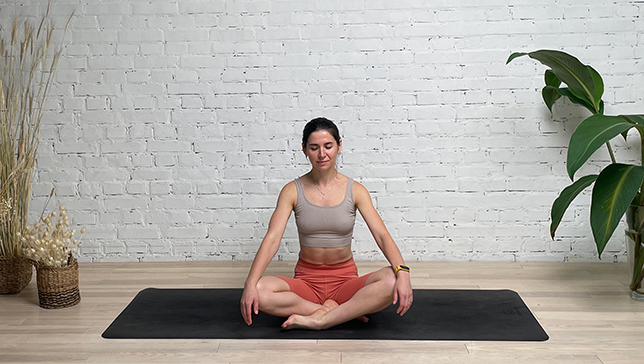
Contents
Easy Pose or Sukhasana from the Sanskrit word ‘Sukha’ meaning ‘Pleasure’ and ‘Asana’ means ‘Pose’, is a beginner-level restorative and meditative pose. Easy Pose is done with the crossing of the legs in the simplest form, unlike other meditative poses. This posture is excellent for meditation, and pranayama. It also works well to bring the mind and breath under control at the beginning or at the end of a yoga class.
Sukhasana is considered a base pose as Easy Pose variations can be derived from this pose. It’s a warm-up yoga pose to prepare the body for more intense yoga poses or flows.
Pose Detail
- Difficulty: Beginners
- By Type: Hip Opening Yoga Poses, Meditation Yoga Poses, Restorative Yoga Poses
- Body Position: Seated Yoga Poses
- By Benefit: Yoga Poses For Anxiety And Panic Attack, Yoga Poses For Sleep, Yoga Poses For Stress Relief
Step-by-Step Instructions
Benefits and Contraindications
Calms the mind.
Strengthens the back.
Keeps your hips mobile.
Good pose to practise for meditation or for Pranayama.
Improves Flexibility
Backache
Arthritis in Knees
Knee Surgery
Spine Issues
Sciatica
Weak Digestion
Photo poses in different angles
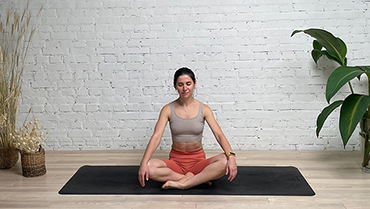
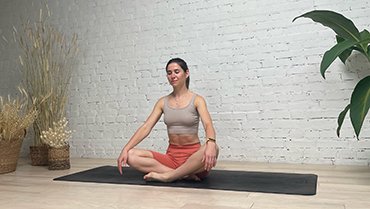
Modifications and Props for Beginners
Even though Easy Pose is a beginner-level restorative pose there might be some difficulties or mistakes in its performance. To avoid these mistakes follow the recommendations below.
Slouching or allowing your chin to jut forward while in Easy Pose can strain your neck or upper back.
- Lift the breastbone and think in terms of your shoulders broadening away from each other (but not too far back).
- Draw your chin in toward the front of your neck and imagine the back of your neck being gently pulled upwards.
In this position, you may have a tendency to allow your lower back to curve inwards (as in a backbend) or outwards (arching your back). Both can put pressure on the spine.
- If your back is curving inward, imagine your tailbone sinking down toward the floor. This will allow your pelvis to tilt back slightly and the lumbar spine to straighten.
- If your back is curving outward, try to gently tilt the pelvic girdle forward. Putting a blanket or blocks under the buttocks so that the hips are raised a little can, for some people, make it easier to sit with the pelvis tilted forward sufficiently.
Sitting in Sukhasana can, in some cases, restrict circulation in the legs.6 This is something to be especially aware of if you already have a condition that compromises circulation, such as varicose veins or edema, or if you are pregnant.
Signs of restricted circulation include numbness or a pins-and-needles sensation in the legs and feet.
- Don’t pull your feet in too close to your pelvis. Placing them farther away will keep your knees from bending too much. Sitting on some padding can also keep your knees from bending excessively.
-
Don’t stay in the position for too long.
Consider an alternative pose, such as Staff Pose (Dandasana).
If your hips are not that flexible, you may not be able to place your knees close to the ground. This can affect the posture and strain your spine.
- Place yoga blocks or a blanket under your buttocks.
- Placing some padding under your knees can also give you more stability and help you feel more grounded in this position.
If the knees are high off the ground, this can cause a significant degree of sideways flexion in your ankles, which can be uncomfortable. Or the outside of your ankles may be uncomfortable because they are touching the ground.
- Place soft padding underneath the ankles or use two yoga mats.
- Tuck each foot under the opposite shin in a traditional cross-legged position.
- Bring one heel in toward your groin. The other foot may rest on the floor in front of you so your heels will line up. This configuration opens your legs a little wider.
Experiment with various heights of support to find the one that is most appropriate for you. For those with extremely tight hips, practice the pose seated in a chair. Leaving one foot flat on the floor, cross the opposite ankle over the knee of the grounded foot. Hold the pose for up to one minute, then repeat on the opposite side.
For more back support, sit with your back against a wall. Another variation is to place a yoga block between the wall and your shoulder blades.
Useful Tips
Practicing Sukhasana in correct alignment will automatically begin to calm your mind and senses. Keep the following information in mind when practicing this pose:
- Keep your pelvis in a neutral position, balancing equally on both sit bones. To find neutral position, gently rock forward and back, and shift your hips side-to-side once you are in the pose. Once you are neutral, your pubic bone and tail bone should both be the same distance from the floor and both sit bones should have an even distribution of weight.
-
Be sure to change the cross of your legs, not favoring one side or the other. Hold the pose for the same length of time on each side.
Let your legs cross naturally — there is no real “right” or “wrong” way for them to cross. In this regard, Sukhasana is slightly different from other seated cross-legged positions, such as Perfect Pose (Siddhasana) or Lotus Pose (Padmasana), which require a more precise foot placement. As long as there is a comfortable gap between your feet and pelvis and the pose feels “easy,” it is Easy Pose.
Frequently Asked Questions
You should feel a gentle stretch and a sense of relaxation in the pose. It’s also important to focus on your breath and maintain proper alignment.
You can hold each pose for 30 seconds to a minute, or longer if you feel comfortable.
Yes, you can do easy yoga poses every day. It’s a great way to start your day or unwind after a long day.
Props such as blocks, straps, and blankets can be helpful for modifying poses or providing support. However, they are not necessary for practicing easy yoga poses.
Modifications & Variations
- Bowing Yoga Mudra Seated
- Easy Pose Bound Hands
- Easy Pose Side Bend Partner
- Easy Pose Aerial
- Easy Pose Forward Bend
Top Preparatory Poses
Top Follow-Up Poses
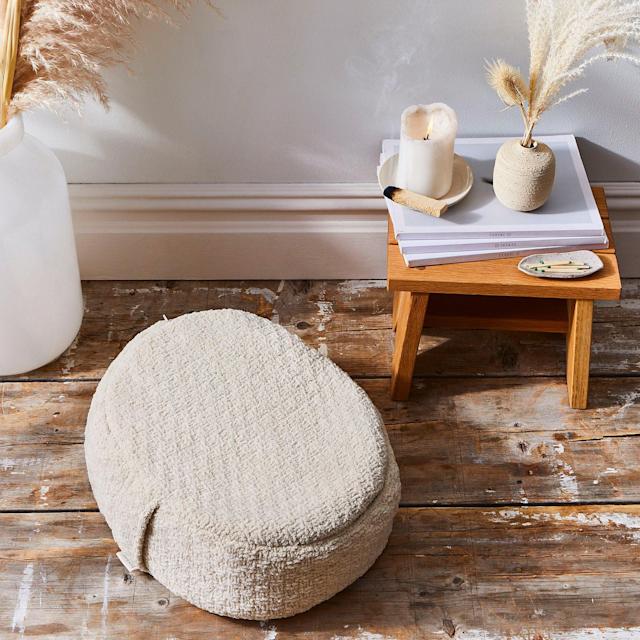
A dedicated meditation cushion, referred to by various names like zafu, zabuton, or simply a...
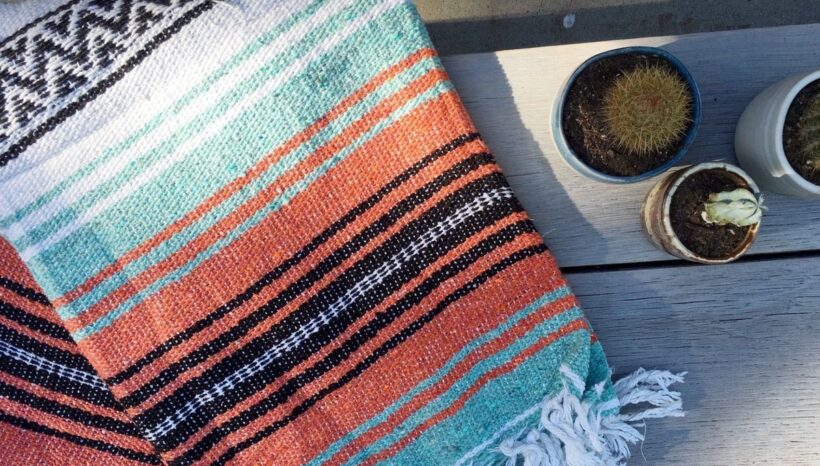
The yoga blanket is an accessory every yogi needs. Whether you’re more experienced or just...
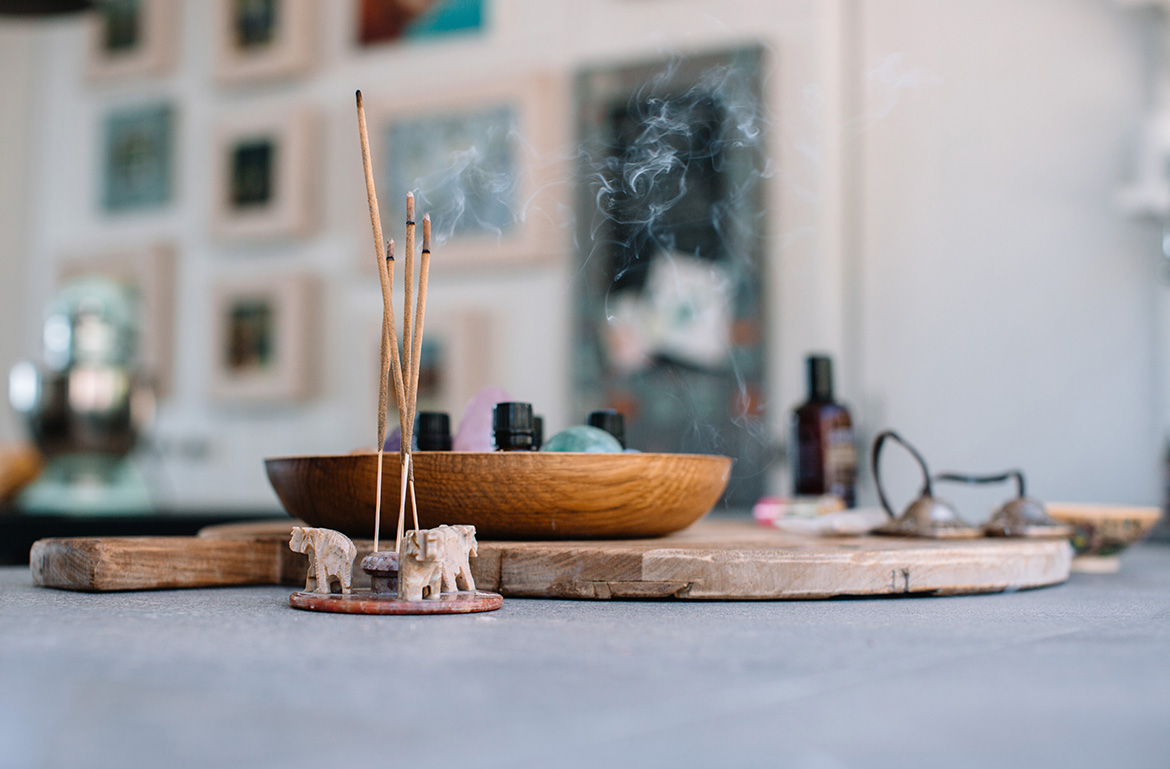
Room fresheners and scent sprays are commonly used to enhance the feel of a room,...
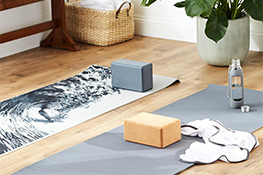
A yoga block crafted from cork material serves as a supportive prop in yoga practice....